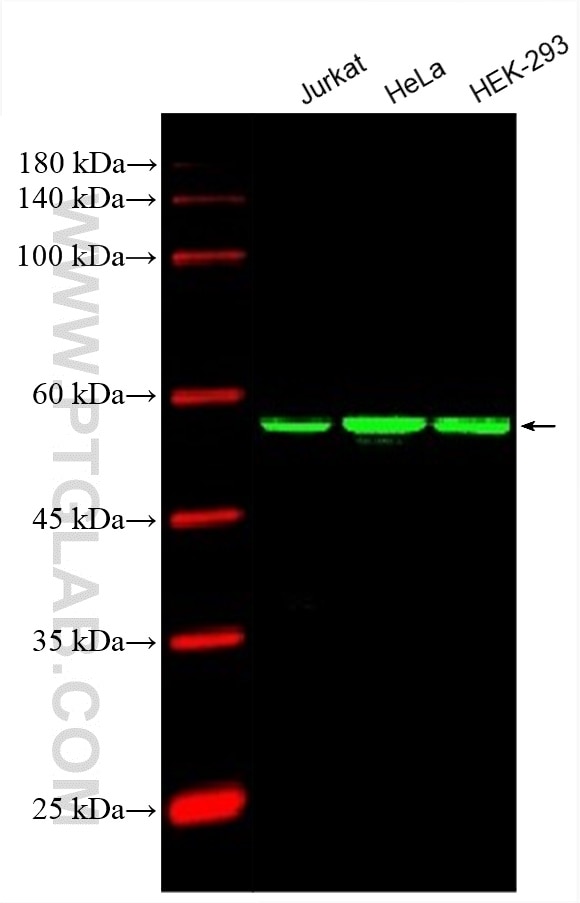- Featured Product
- KD/KO Validated
PDCD4 Monoklonaler Antikörper
PDCD4 Monoklonal Antikörper für WB
Wirt / Isotyp
Maus / IgG1
Getestete Reaktivität
human
Anwendung
WB
Konjugation
CoraLite® Plus 488 Fluorescent Dye
CloneNo.
1F1A11
Kat-Nr. : CL488-66100
Synonyme
Galerie der Validierungsdaten
Geprüfte Anwendungen
| Erfolgreiche Detektion in WB | Jurkat-Zellen, HEK-293-Zellen, HeLa-Zellen |
Empfohlene Verdünnung
| Anwendung | Verdünnung |
|---|---|
| Western Blot (WB) | WB : 1:500-1:1000 |
| It is recommended that this reagent should be titrated in each testing system to obtain optimal results. | |
| Sample-dependent, check data in validation data gallery | |
Produktinformation
CL488-66100 bindet in WB PDCD4 und zeigt Reaktivität mit human
| Getestete Reaktivität | human |
| Wirt / Isotyp | Maus / IgG1 |
| Klonalität | Monoklonal |
| Typ | Antikörper |
| Immunogen | PDCD4 fusion protein Ag19239 |
| Vollständiger Name | programmed cell death 4 (neoplastic transformation inhibitor) |
| Berechnetes Molekulargewicht | 469 aa, 52 kDa |
| Beobachtetes Molekulargewicht | 56 kDa |
| GenBank-Zugangsnummer | BC026104 |
| Gene symbol | PDCD4 |
| Gene ID (NCBI) | 27250 |
| Konjugation | CoraLite® Plus 488 Fluorescent Dye |
| Excitation/Emission maxima wavelengths | 493 nm / 522 nm |
| Form | Liquid |
| Reinigungsmethode | Protein-G-Reinigung |
| Lagerungspuffer | BS mit 50% Glyzerin, 0,05% Proclin300, 0,5% BSA, pH 7,3. |
| Lagerungsbedingungen | Bei -20°C lagern. Vor Licht schützen. Nach dem Versand ein Jahr stabil. Aliquotieren ist bei -20oC Lagerung nicht notwendig. 20ul Größen enthalten 0,1% BSA. |
Hintergrundinformationen
Programmed cell death 4 (Pdcd4) is a novel tumor suppressor that inhibits translation, progression and invasion. It was first identified as being differnetially upregulated during apoptosis. Pdcd4 interferes with the activity of the eukaryotic initiation factor (eIF) 4A by displacing the scaffold protein eIF4G from its binding to the RNA helicase eIF4A.
Protokolle
| Produktspezifische Protokolle | |
|---|---|
| WB protocol for CL Plus 488 PDCD4 antibody CL488-66100 | Protokoll herunterladen |
| Standard-Protokolle | |
|---|---|
| Klicken Sie hier, um unsere Standardprotokolle anzuzeigen |


